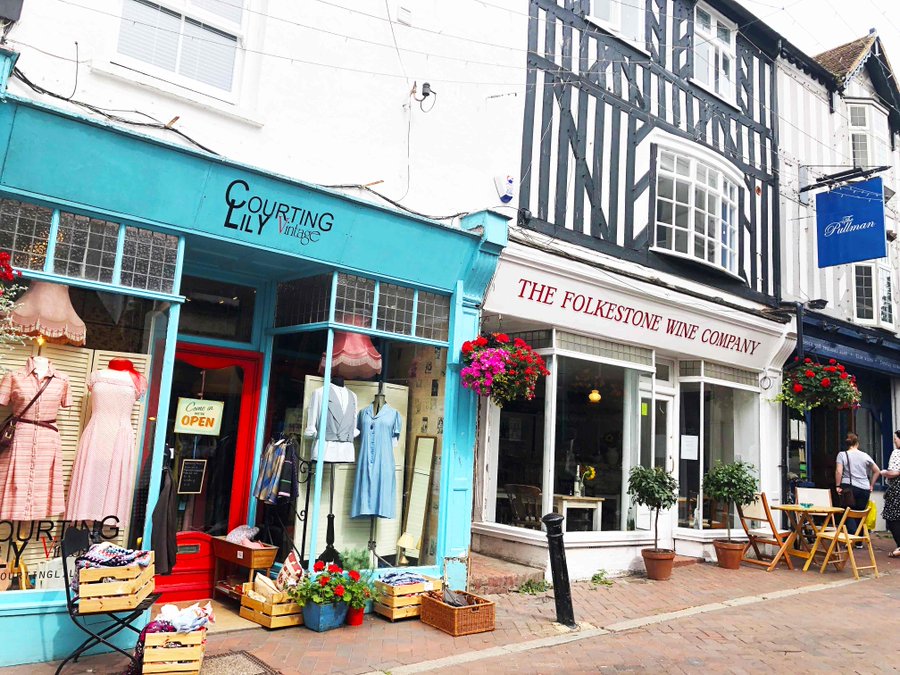Hythe to Folkestone - One of the Guardians 10 great coastal walks
It might come as a surprise to many to find The Guardian including the walk from Hythe to Folkestone among 10 great coastal walks in a recent article. But actually the walk they describe is a version of the walks we love. Our cottage sits in the middle of this walk on the sea front at Sandgate. The writer encourages the reader to see the dramatic seas at Sandgate, and enjoy the quirky shops. Well sometimes it depends when you visit. In August we have seen record temperatures & the a like a mill pond, we have also seen gales & 8ft waves crashing onto the pebbled beach. Either way we love it.
Since we are in the middle for us they are 2 circular walks. The first into Folkestone & return is the shorter and takes maybe 2 hours.
Starting from Sandgate you have a fascinating glimpse into the gardens of the beach houses some of the older grander houses are survivals from late 19th century. The picture below is of Granville Parade with the beach house that is next to the Little Yellow Cottage around this time occupied by H.G.Wells It is Sandgate Castle that dominates this stretch of the walk no longer stretching out across the beach as it does in the picture. Its deeds still lay claim to the beach area of the original footprint which prompted the current owner to put up signs claiming the beach was private. He gave up his claim after the signs were repeatedly set fire to.
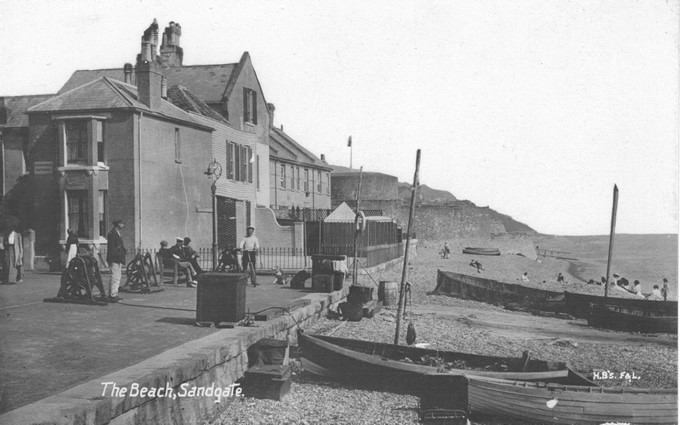
The walls of the castle were breached by a storm in1927. You can see a short film of the aftermath online https://player.bfi.org.uk/free/film/watch-devastated-by-the-great-storm-1923-online As you pass the last of the beach front houses look up and you can see the elegant Edwardian houses on Radnor Cliff with gardens stretching down to the beach.Before passing the Mermaid Café you will come across the multi coloured Victorian beach huts. Having been left in a poor state for decades the council have taken repocession of the beach huts & many are being sympathetically restored.Look out for some unique beach huts constructed over past years for the Folkestone Triennial art exhibition.
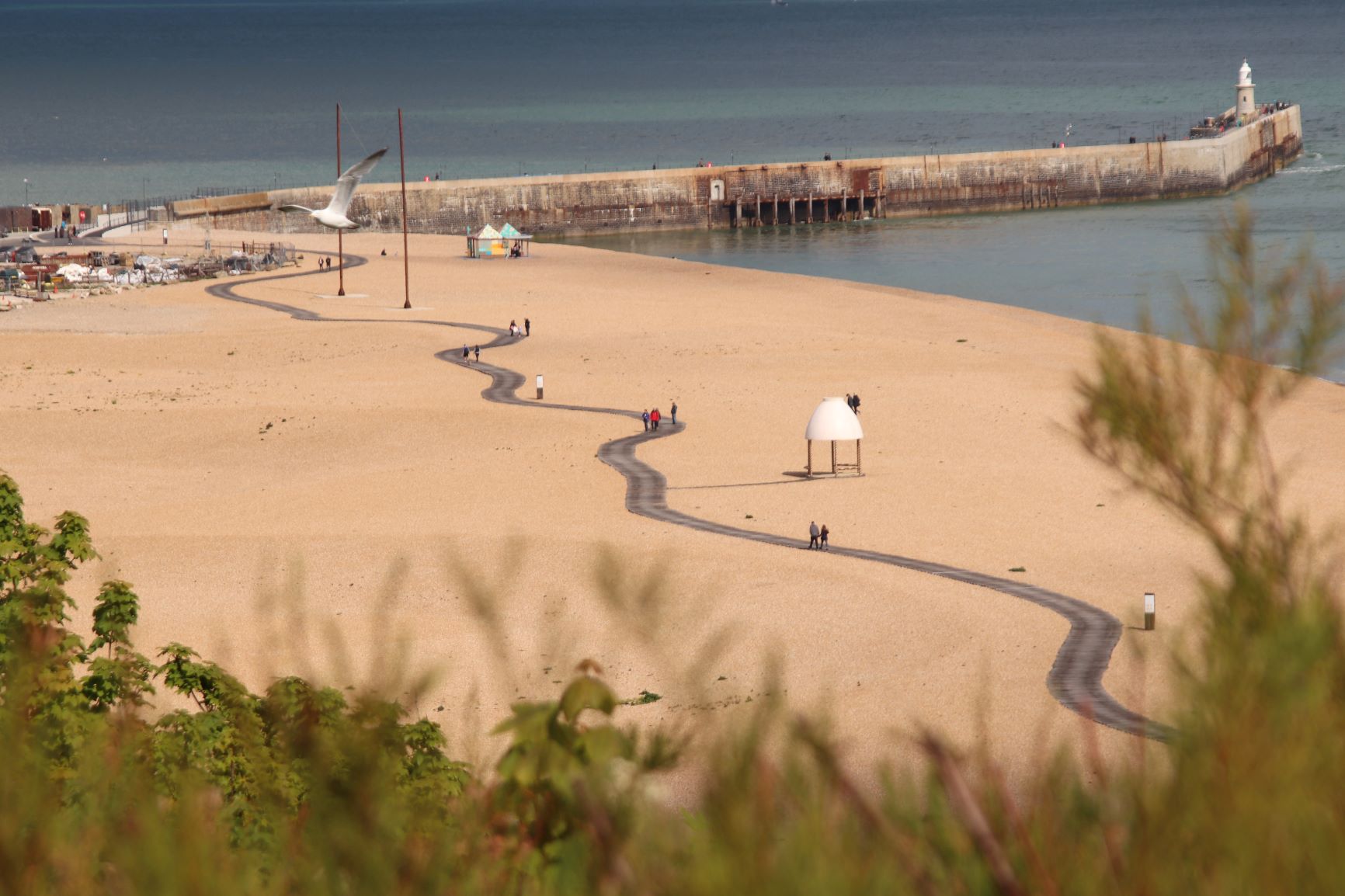
Crossing a large expanse of pebbles is the boardwalk made of old rail sleepers and finally you reach the harbour. Its heyday as the route of the Orient Express long gone you can now walk along the railway bridge to the fish stalls on the harbour wall. Try a dish of cockles & whelks.
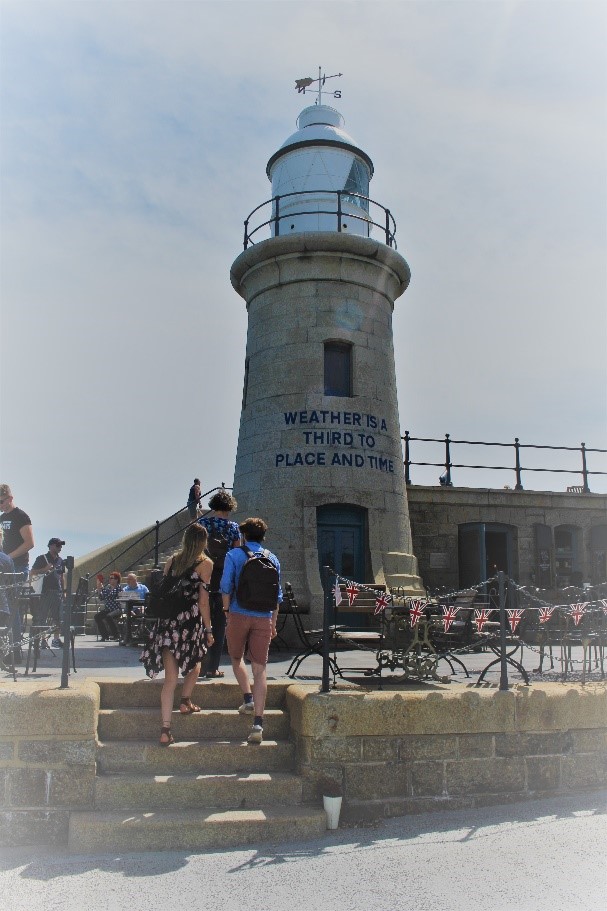
The Harbour Arm is a great half-way point on any walk. The Arm used to be part of the passenger terminal for the Cross Channel Ferries. It now houses food and drink stalls & regularly hosts live music & events from March through to October.
Particularly recommend supping English sparkling wine from the champagne bar in the lighthouse at the end of the arm.
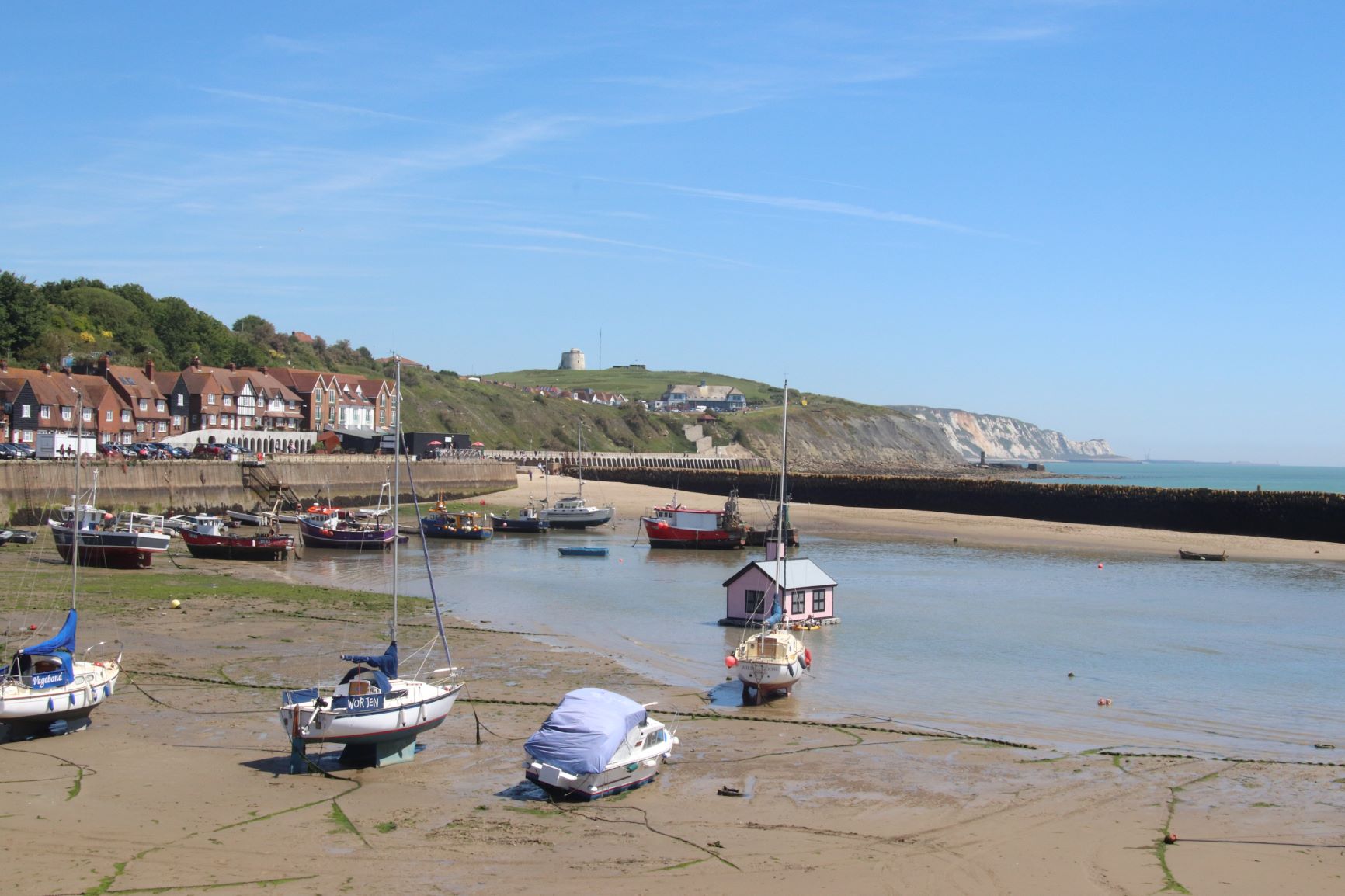
When you get to the harbour after some refreshment for the hearty there is the opportunity to walk on further round the coast & take in the desolate beauty of the Warren. Walk around the harbour past the golden sands beach where £10k of gold bars were buried in 2014, past the groins of Sunny Sands beach where another Gormley statue stands facing the waves, and finally climb the steps up the cliff. Keep to the grassy edge & past the coast guards lookout you will see a sign leading down onto the Warren. On a clear day you will see how close we are to France. Take this path down through broken woods to the sea and beach below.

The Warren is an extraordinary fractured space – the wide expanse of concrete protecting the chalk cliffs and the decaying groins are in stark contrast to the rest of the coast.
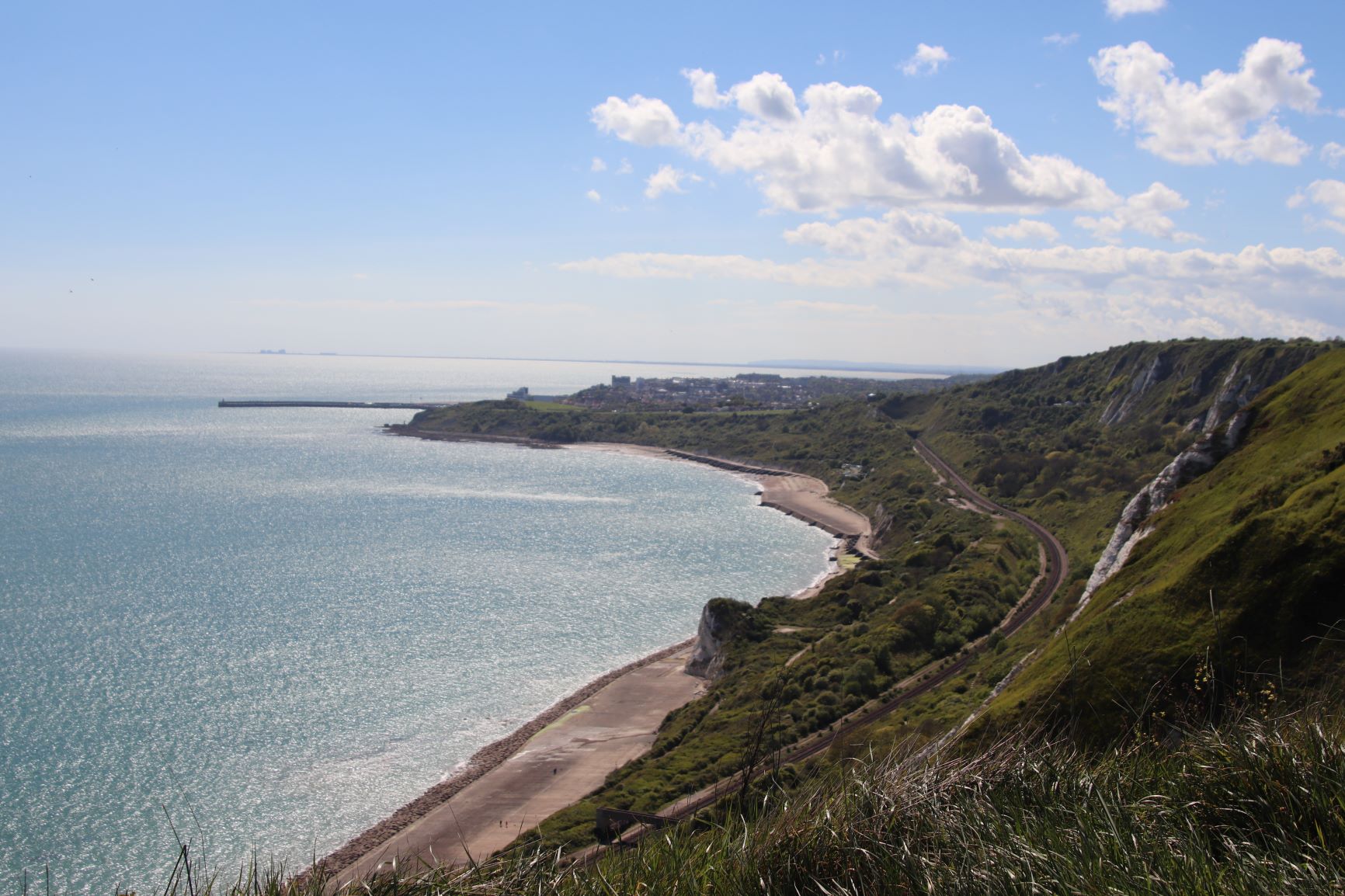
Part way along the Warren there is a road up to a campsite & running adjacent to the Folkestone to Dover train line take this road up & you come out at a recently converted martello tower. One of the relics of the centuries old campaigns against our European neighbours. Returning to the harbour cross the road & head up into the Old High Street. This is the creative quarter with a mix of café’s, art & craft shops, and restaurants.
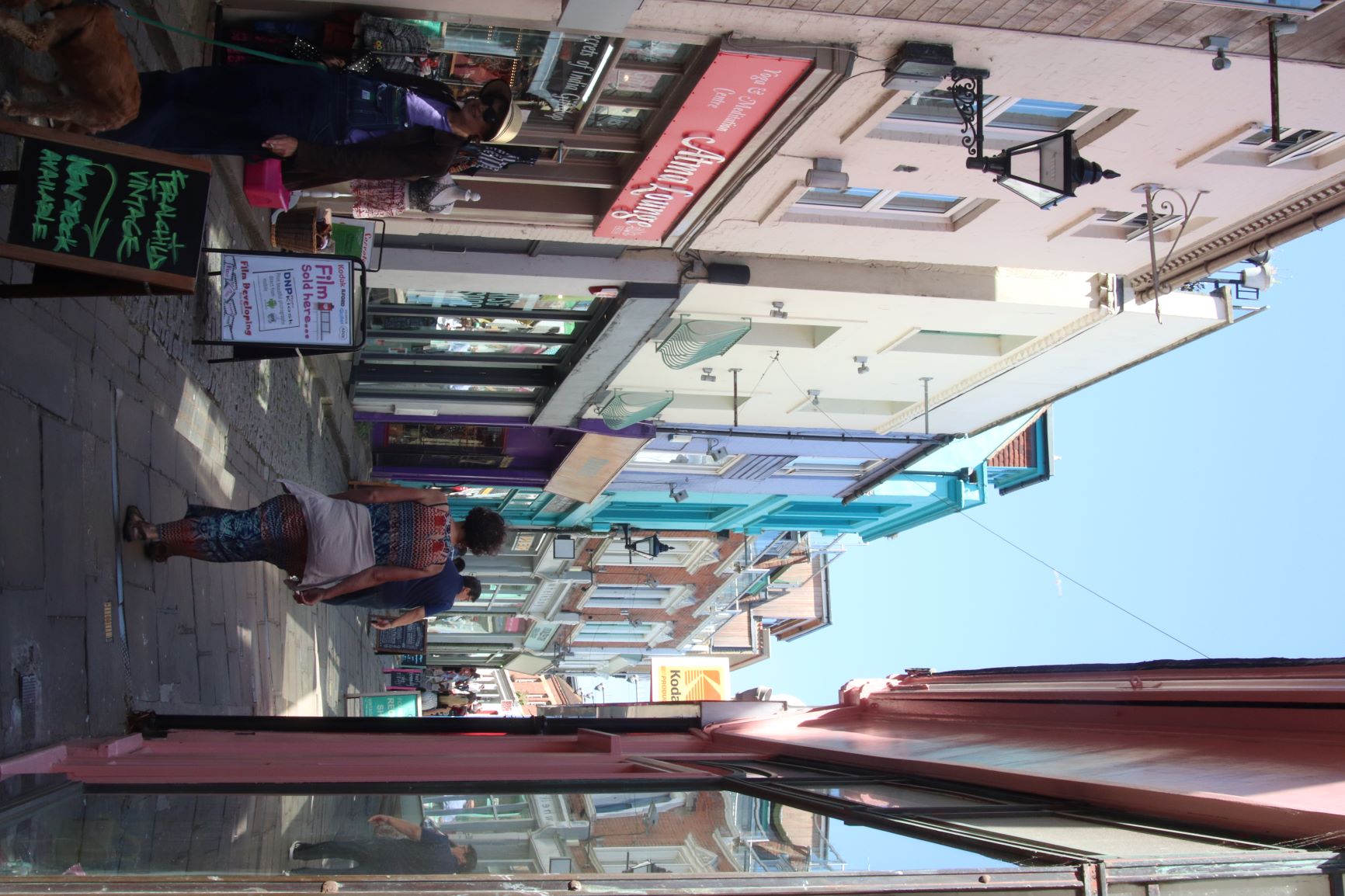
At the top of the street turn right to the Folkestone museum. Small but great little museum for Adults & kids. Interactive displays on local history from ancient history to WW2. See pictures & artefacts from the Bienvenue which was wrecked near to our Little Yellow Cottage.
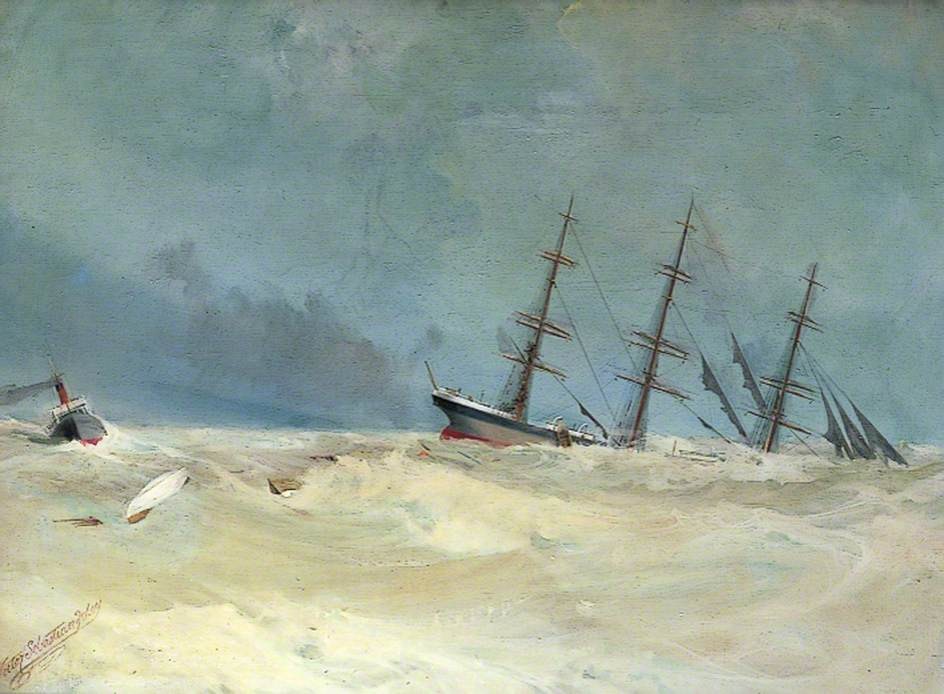
Turn left out of the museum, past the Old High Street and on to Church Street. Home to a few little nice shops & the Pullman Wine Bar where we spent too much time in our youth.
You are en route to the historic Bayle. Head up to the British Lion Pub & into St Eanswyne churchyard. If the church is open it is really an extraordinary little church with wall paintings funded by a charismatic vicar in the 19th century. Recently the bones of St Eanswyne were found in the church.
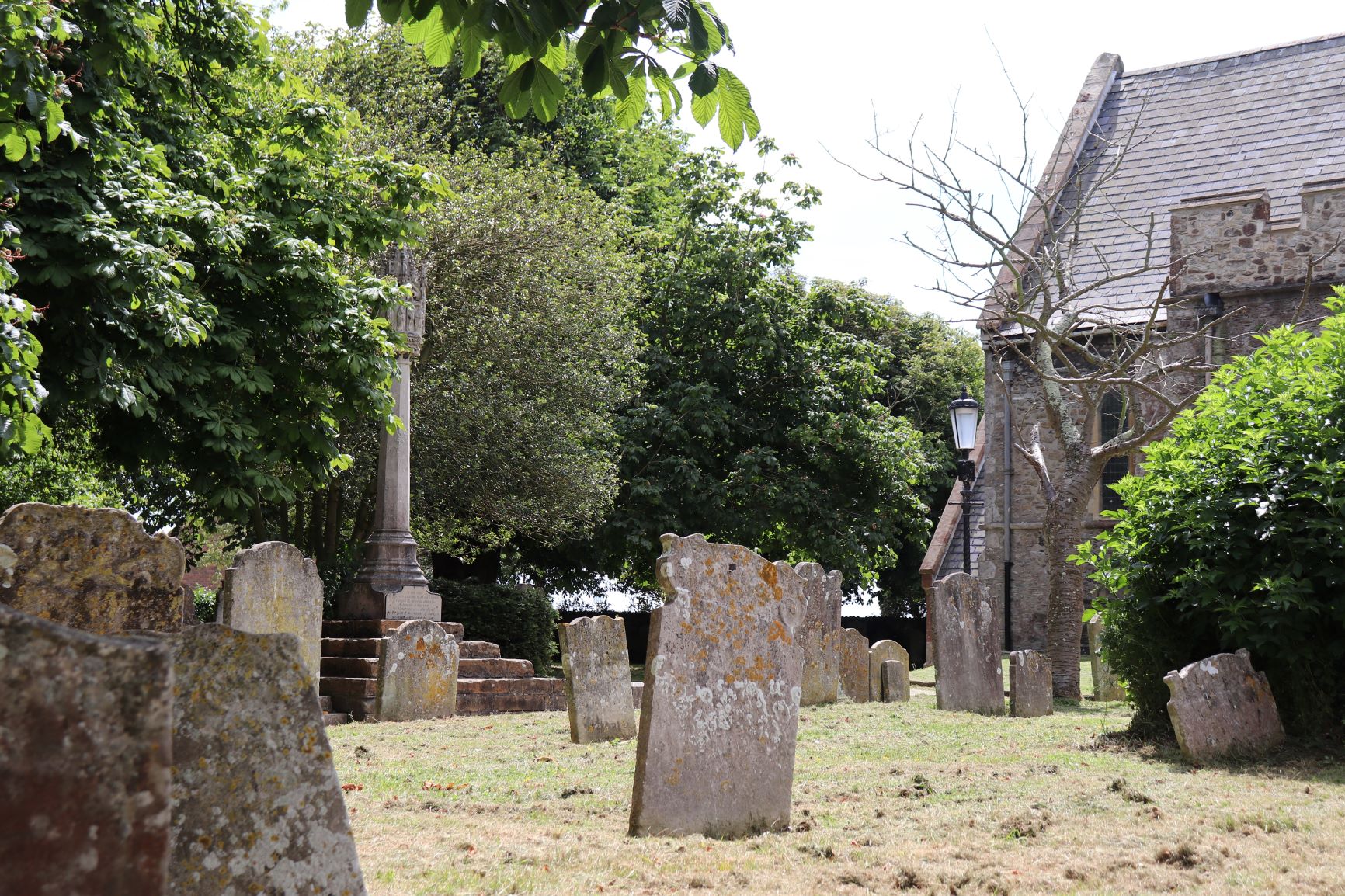
Follow the path around the church & turn right in front of Albion Villa’s. At no 3 Charles Dickens is supposed to have stayed in 1855 & written part of Little Dorrit.
https://www.visitkent.co.uk/media/1834/folkestone-historical-walks-the-bayle-the-old-high-street.pdf
The road going down to the harbour is Remembrance Road where millions of young men marched down to embark for France in WW1. They are remembered now by the thousands of knitted poppies & the memorial arch. From here you can return to the cottage walking along the Leas past the massive Edwardian Grand & New Metropole hotels, or alternatively & especially if you have managed to drag children this far then go as far as the bandstand & down the zig zag path.This will take you to the Lower Leas Park & one of the best adventure playgrounds for kids. You will struggle to tear them away from this. Don't get shipwrecked!
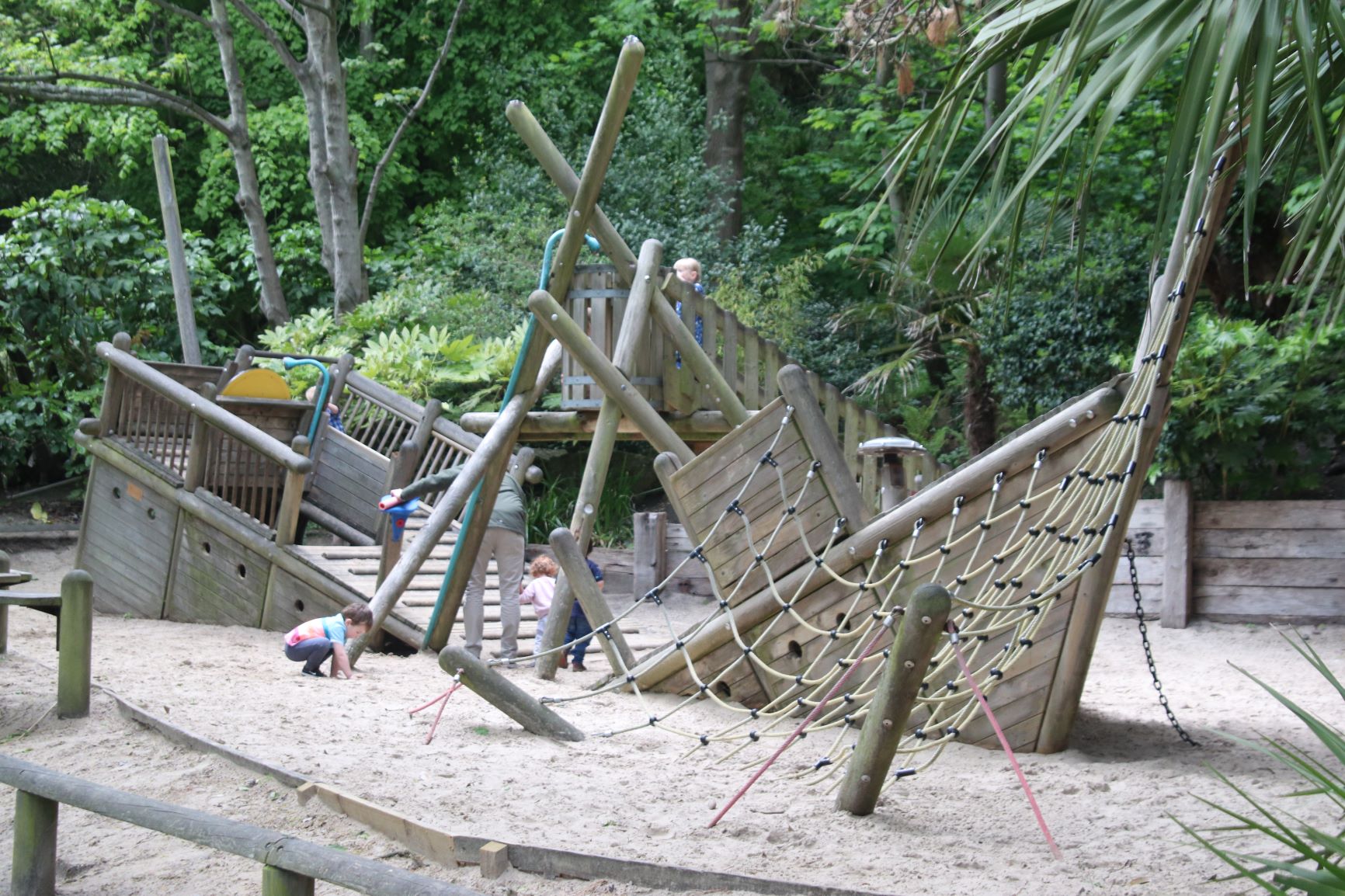
If you fancy having a brief glimpse into Edwardian life stay on the Leas & you could try afternoon tea in the Grand’s Palm Court restaurant. Friday at 2 p.m. for those prepared to book they offer a tour of the Grand plus afternoon tea.
The Leas was a place to walk to show off for the wealthy down from London. The great hotels were at the centre of this. But walk on & almost at the end of the Leas you see a long 2 storey brick house. This was the home of Baden Powell.
At the end of the Leas on your right there is an overgrown coppice. Look carefully there is an entrance that takes you through to a triennial artwork and finally to the hidden Martello tower no 4. Back on the Leas there is a stepped path in the direction of Sandgate follow that to the road and then turn left. At this point you will go past Spode House the home H.G.Wells built for his family. Either side of the road at this point are the remains of a bridge that once carried the Sandgate Hill Lift

At this point turn back for 100 metres or so & there is a little path taking you down to Sandgate village. It is from this spot that there are two images we love. The first is a lithograph done sometime after 1815.
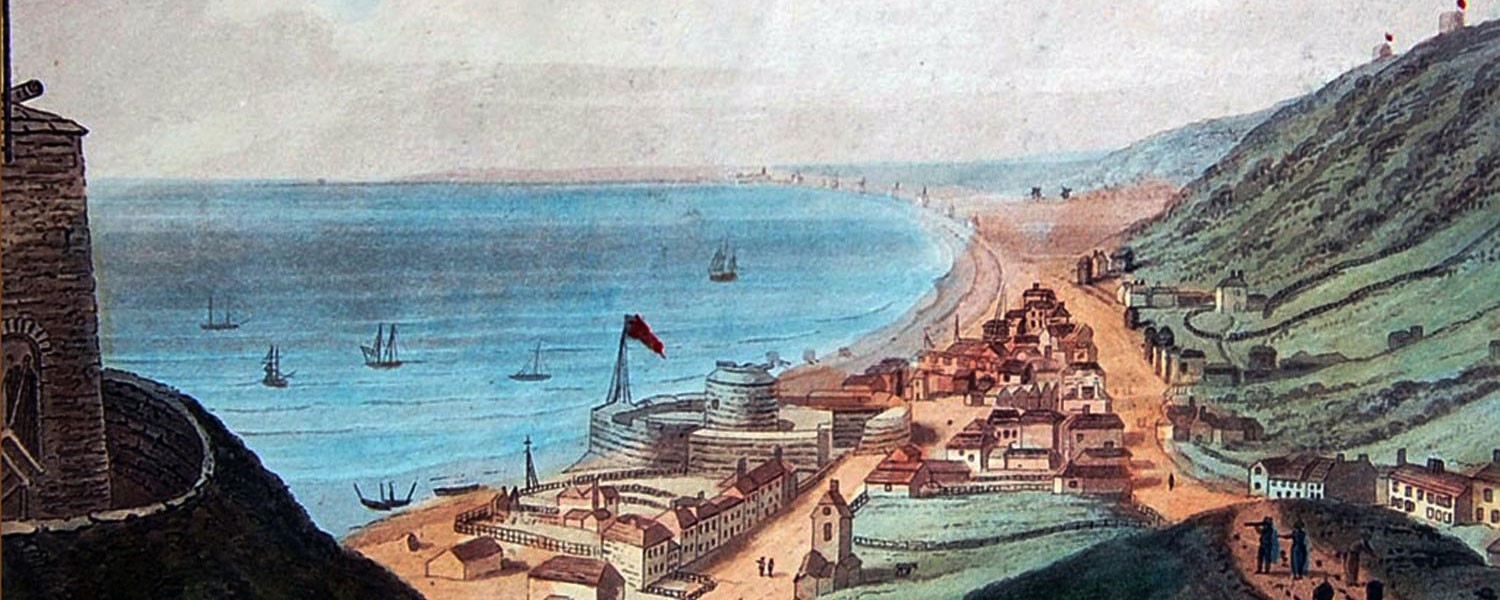
The second is the view today over the rooftops of Sandgate & on towards Hythe, the Romney Marshes & Rye.
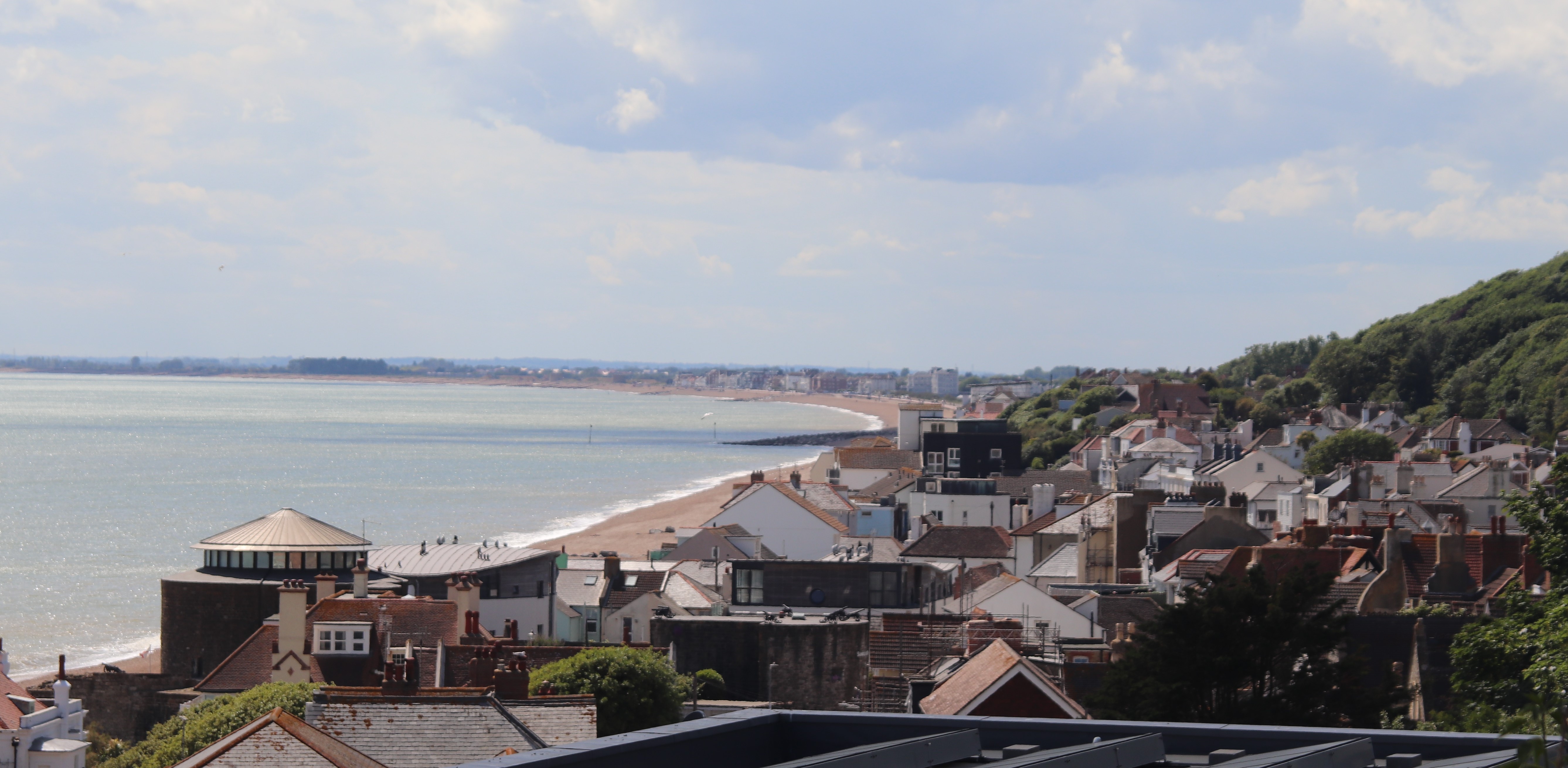
The walk finishes along a dusty path with a view to the tower on the old Sandgate School.
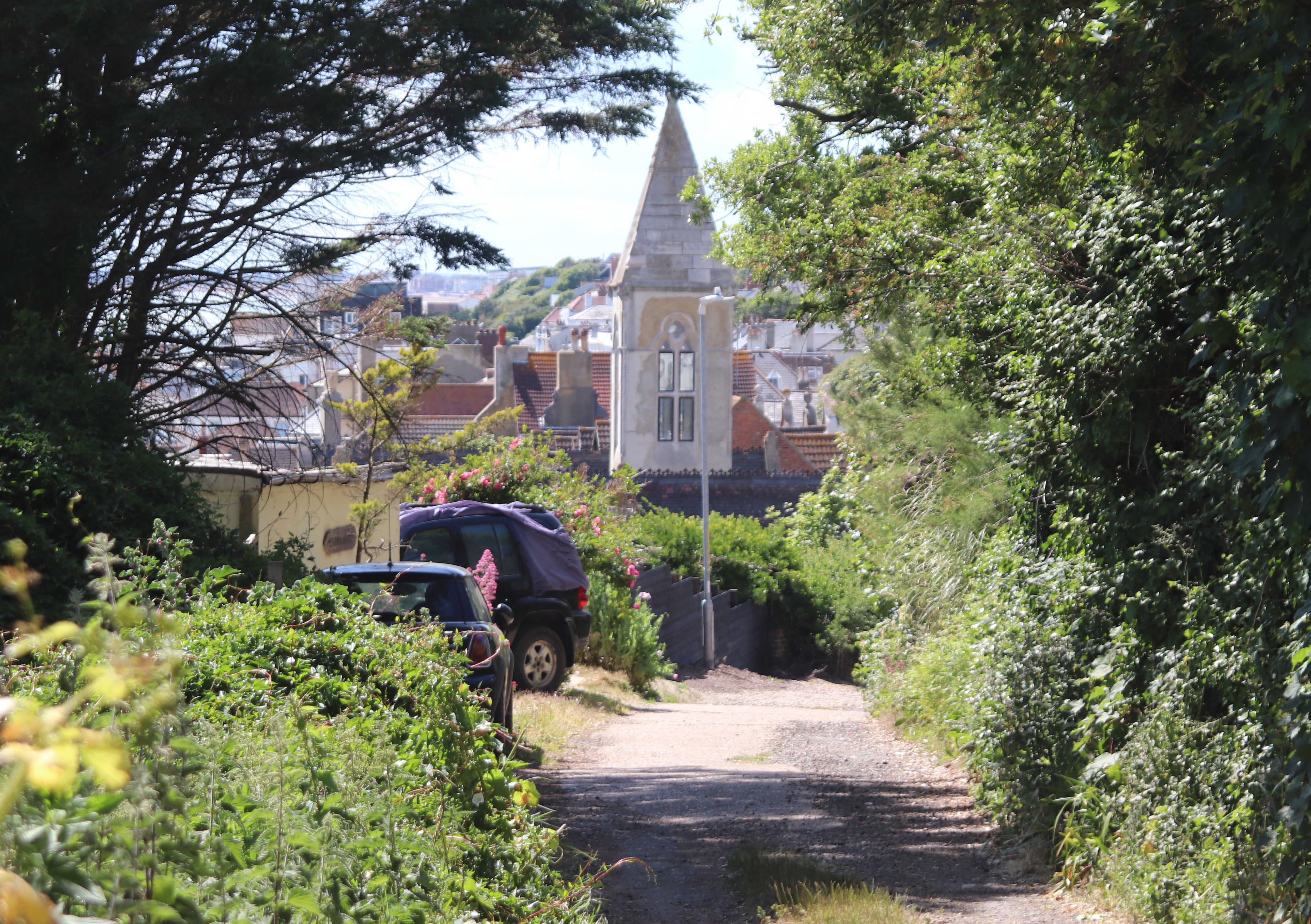
The dear old Guardian didn't get the half of what a lovely walk this is.
